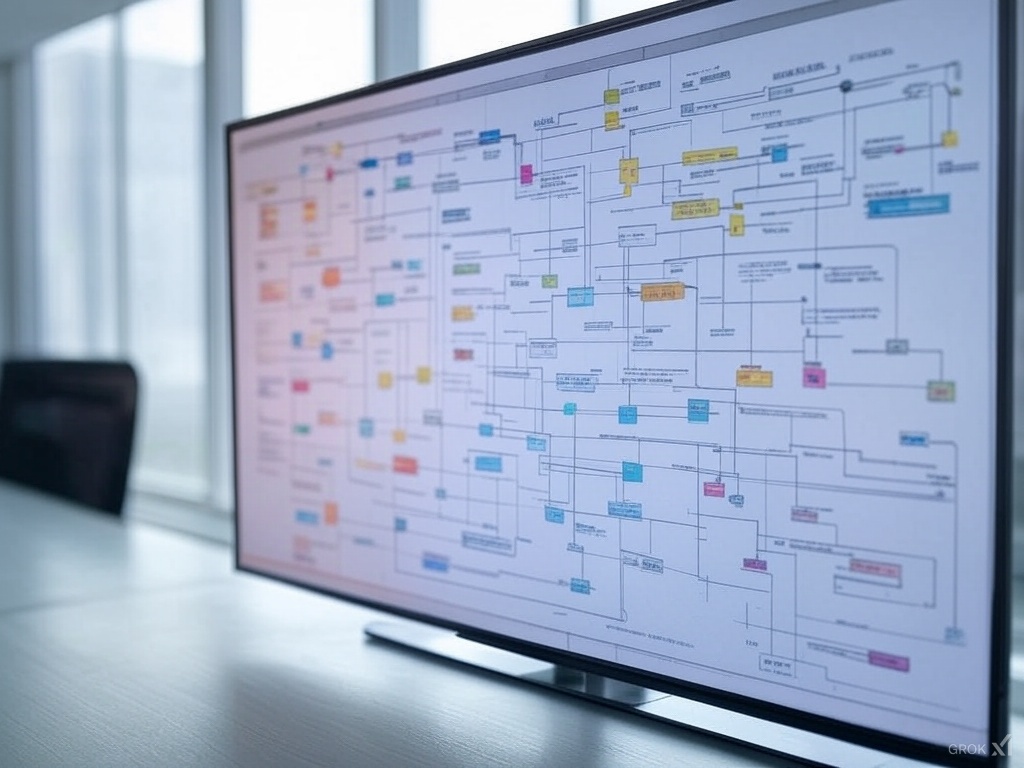
Agentic
Agentic AI is an advanced branch of artificial intelligence that empowers systems to act autonomously, make decisions, and accomplish complex tasks with minimal...
Intelligent agents are autonomous AI entities capable of perceiving and acting on their environment, often collaborating in crews and using specialized tools to automate tasks, analyze data, and solve problems.
An intelligent agent is an autonomous entity designed to perceive its environment through sensors and act upon that environment using actuators. These agents are equipped with artificial intelligence capabilities, such as decision-making and problem-solving, allowing them to interact with their environment and other agents without human intervention. Intelligent agents are often integrated with large language models (LLMs), which provide them with natural language processing abilities, enabling them to understand and respond to human input in a conversational manner.
The structure of an intelligent agent includes:
In the context of AI, a “crew” refers to a group of intelligent agents working collaboratively to achieve a common goal. Each agent within a crew is assigned specific roles and tasks, leveraging their individual strengths to complete complex workflows more efficiently than a single agent could. Crews are designed to mirror real-life team dynamics, where each member contributes uniquely to the project’s success.
In the realm of intelligent agents, tools refer to the functions or resources that agents utilize to perform their tasks. These can range from simple data retrieval functions to complex code execution capabilities. Tools extend the functionality of agents, enabling them to perform a broad spectrum of tasks with greater efficiency and accuracy.
CrewAI is an open-source framework for orchestrating intelligent agents as cohesive crews. It provides the infrastructure for role assignment, task delegation, and inter-agent communication, allowing developers to build complex multi-agent systems efficiently.
The study of intelligent agents, their integration within human crews, and the tools that facilitate these interactions is a rapidly evolving field. Recent advancements have highlighted the importance of multidisciplinary research in enhancing Human-AI teaming.
In the paper “CREW: Facilitating Human-AI Teaming Research” by Lingyu Zhang et al. (2024), the authors introduce a platform designed to support collaborative research between humans and AI agents. The CREW platform emphasizes human involvement, offering pre-built tasks for cognitive studies and real-time human-guided reinforcement learning agents. This research underscores the necessity of bridging machine learning with cognitive science and other disciplines to improve the efficacy of Human-AI collaboration (Link to paper: CREW: Facilitating Human-AI Teaming Research).
Another notable contribution is the paper “AMONGAGENTS: Evaluating Large Language Models in the Interactive Text-Based Social Deduction Game” by Yizhou Chi et al. (2024). This work utilizes a text-based game environment to study the behavior of language agents in social deduction scenarios, such as those found in the game Among Us. The study examines how large language models can comprehend game rules and make strategic decisions, offering insights into the application of AI in socially driven settings with incomplete information (Link to paper: AMONGAGENTS).
An intelligent agent is an autonomous entity that perceives its environment through sensors and acts upon it using actuators. Powered by AI, these agents make decisions, solve problems, and can interact with their environment and other agents without human intervention.
Key features include autonomy, adaptability, interactivity, and rationality. Intelligent agents operate independently, learn from experience, engage in conversations, and perform actions that maximize their performance based on observations.
Intelligent agents are used in customer support, data analysis, automation, gaming, and fraud detection—handling tasks such as answering inquiries, processing data, automating workflows, and identifying suspicious activities.
A crew refers to a group of intelligent agents working collaboratively to achieve a common goal. Each agent is assigned specific roles and tasks, enabling efficient and parallel execution of complex workflows.
Tools are functions or resources that agents use to perform their tasks, such as search tools, code execution, or custom utilities. Tools extend agents’ capabilities, allowing them to process data, automate workflows, and integrate with frameworks like LangChain.
Frameworks like CrewAI, LangGraph, and Autogen enable the orchestration and collaboration of multiple intelligent agents, providing role assignment, task management, and integration with large language models for enhanced performance.
Start building smart chatbots and AI tools with FlowHunt's intuitive platform. Automate tasks, analyze data, and enhance customer support—all under one roof.
Agentic AI is an advanced branch of artificial intelligence that empowers systems to act autonomously, make decisions, and accomplish complex tasks with minimal...
An embodied AI agent is an intelligent system that perceives, interprets, and interacts with its environment through a physical or virtual body. Learn how these...
Discover how Agentic AI and multi-agent systems revolutionize workflow automation with autonomous decision-making, adaptability, and collaboration—driving effic...
Cookie Consent
We use cookies to enhance your browsing experience and analyze our traffic. See our privacy policy.
